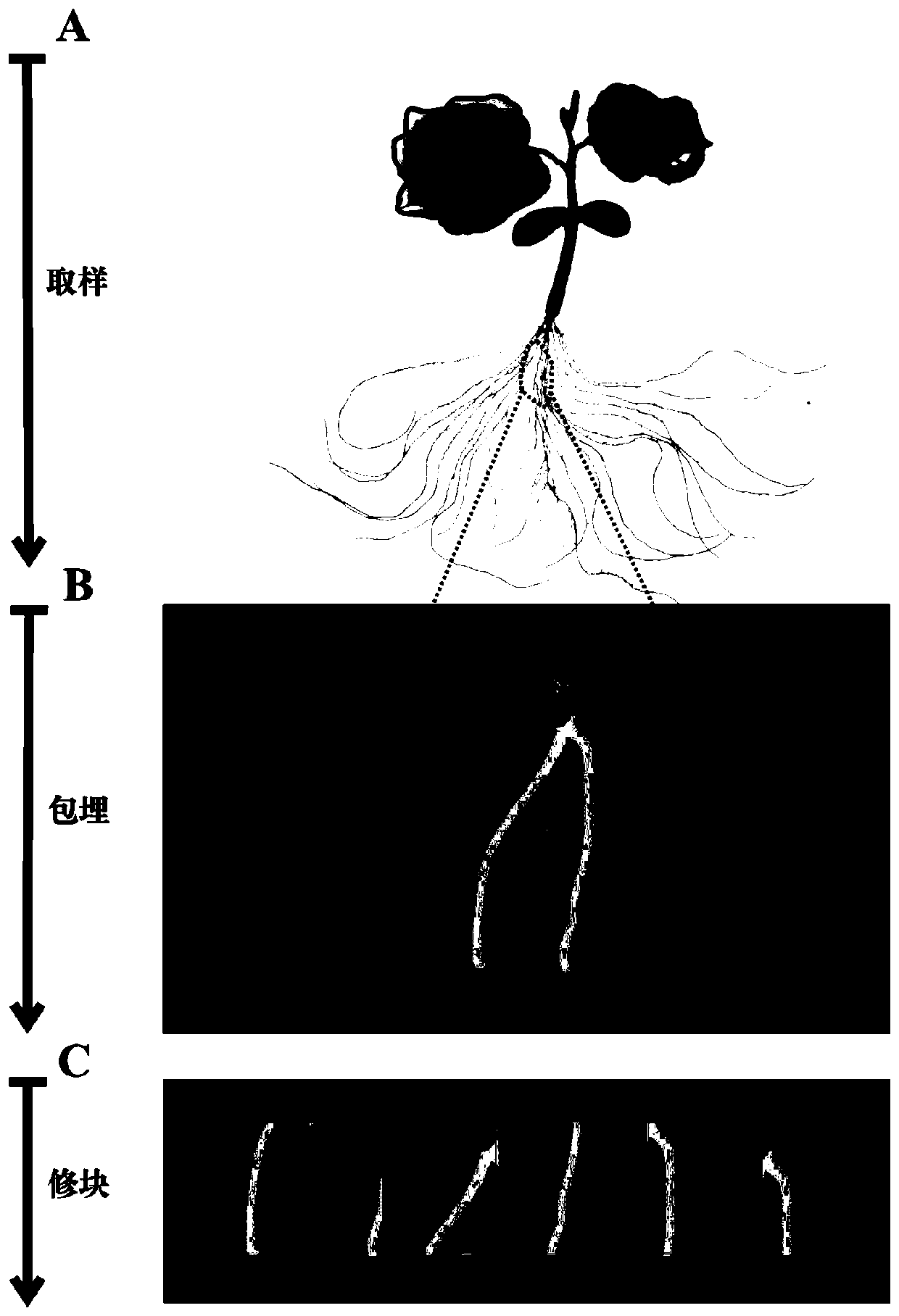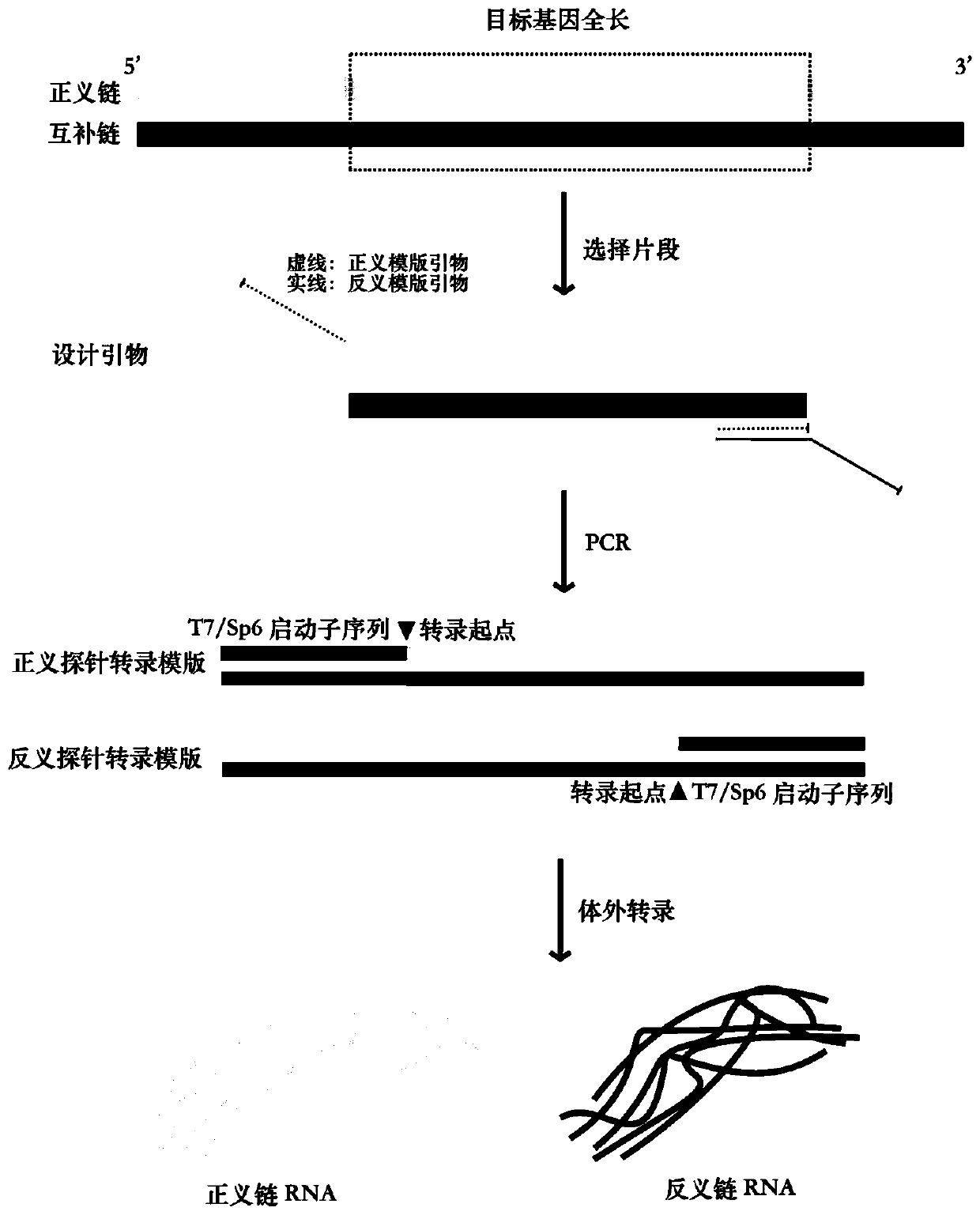RNA in-situ hybridization optimization method for cucumber seedling gene localization research
An in situ hybridization and gene localization technology, applied in the field of plant biology, can solve the specific effects of localization, tissue shrinkage, structural incompleteness and other problems
- Summary
- Abstract
- Description
- Claims
- Application Information
AI Technical Summary
Problems solved by technology
Method used
Image
Examples
Embodiment
[0116] Example: In situ hybridization of CsNPF7.2 gene in young cucumber stems
[0117] 1 test material
[0118] Tissue culture: select 'Xintai Mici' cucumber seeds with the same size, shape and weight, soak them in distilled water at 55°C to 60°C for about 30 minutes, and then use small tweezers to peel off the cucumber seed coat (try to avoid the tweezers from touching the growth of the seeds) Sterilized with 75% alcohol for 30s, washed with sterilized water for 3 times, sterilized with 2.5% sodium hypochlorite for 10min, washed with sterilized water for 3 times, then put the treated seeds on MS solid medium, and transferred to Jiangnan Instrument Factory In the plant incubator, the photoperiod is set as follows: the first stage is 28°C dark culture for 24h; the second stage photoperiod is 12h, 28°C during the day and 18°C at night, and the culture is up to 13 days.
[0119] 2 Sampling and fixation of test materials
[0120] First soak the vacuumed cucumber young stems w...
PUM
 Login to View More
Login to View More Abstract
Description
Claims
Application Information
 Login to View More
Login to View More - R&D
- Intellectual Property
- Life Sciences
- Materials
- Tech Scout
- Unparalleled Data Quality
- Higher Quality Content
- 60% Fewer Hallucinations
Browse by: Latest US Patents, China's latest patents, Technical Efficacy Thesaurus, Application Domain, Technology Topic, Popular Technical Reports.
© 2025 PatSnap. All rights reserved.Legal|Privacy policy|Modern Slavery Act Transparency Statement|Sitemap|About US| Contact US: help@patsnap.com



